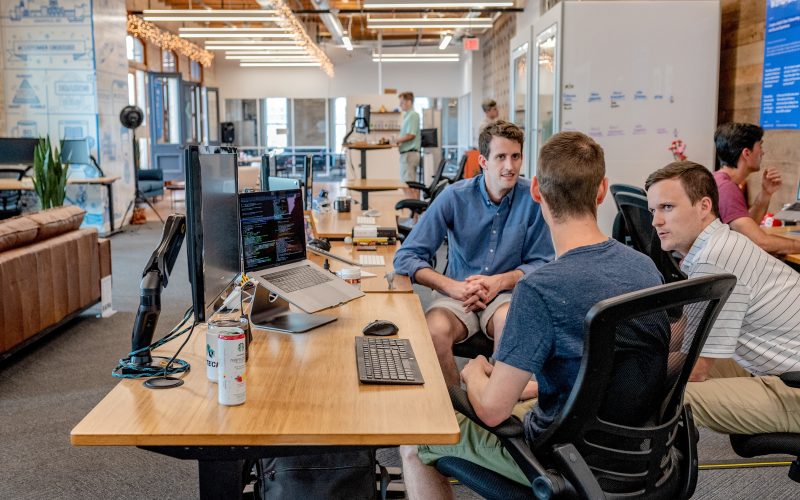Social media may be abound with complaints of “health and safety gone mad” or the intrusion of the “nanny state,” however the truth remains clear – health and safety remains a top priority for UK employers.
A recent survey, for instance, shows 565,000 workers sustained a non-fatal injury across 2021/22.
Susanne McGraw, head of Injury at Watermans has commented: “The importance of health and safety protocols in the workplace cannot be overestimated. Most people go to work out of necessity, to pay for everyday things and to have a better life. It is therefore essential that employers look after their employees and provide them with a safe environment within which to work – and that employees follow the instructions provided to them. It should not be the case that someone leaves their home in the morning either never to return or return injured, simply because of a failure to follow simple health and safety guidelines.
Businesses should implement the appropriate measures tailored to their working environment and any potential safety hazards. This will not only demonstrate the necessary duty-of-care to your workforce but also build trust in your brand reputation and help to avoid any costly legal procedures.”
With this in mind, we outline the ten most common injuries in the workplace and share how these can be avoided.
Slips, Trips and Falls
Statistically, the leading cause of personal injury in the UK is slips, trips and falls. This type of injury doesn’t discriminate. Whether you work in a shop, factory or office block, you’ll enjoy likely encounter a slippery surface at some point. To prevent slip hazards, businesses should implement anti-slip equipment, grit walkways during cold snaps, fastidiously use wet floor signs and put control measures in place when working with liquids.
Handing, Lifting or Carrying
Those in heavy-lifting roles will likely be familiar with muscle pulls and strains which are another common workplace accident, particular in manual roles. Back and neck strains are particularly frequent when lifting. To combat this, businesses should roll out basic training on how to lift without injury and utilise machinery where possible.
Moving Objects
Many workers may find themselves on the receiving end of a moving or falling object. This may be especially common in a warehouse type environment where stock is piled high or in fast-paced bar and restaurant work. Businesses should make sure potentially hazardous items are stored properly using appropriate containers and cages, in addition to providing storage training.
Repetitive Strain
A repetitive strain injury may affect many different parts of the body and may be incurred when performing repetitive tasks that cause damage to the musculoskeletal or nervous system. Common activities could include, hairdressing, typing, factory work or spending long periods in a fixed position. Businesses can minimise this risk by encouraging employees to take frequent breaks and optimise their workstations to promote good posture and maximum comfort.
Workplace Violence
A surprising entry on this list, this includes interpersonal violence between colleagues or customers. Such incidents may have been brewing under the surface for years or may be a spontaneous response to a set of high-pressure circumstances. Organisations should strive to proactively create a positive company culture while trying to resolve any employee grievances internally before this comes to blows.
Falls From Height
Many jobs may require working at height including telephone engineers, construction workers or firemen. This could also be as commonplace as using ladders or reaching for stock on a high shelf. Tragically, falls from height account for a third of workplace fatalities each year. Top health and safety training at height therefore is paramount while any equipment used to facilitate working at height should be checked regularly for faults.
Cuts and Lacerations
From the office to the factory floor, many different instruments can leave the user with a nasty cut. This can include everything as mundane as the papercut or more serious accidents with power saws and more dangerous equipment. Accidents can be prevented with comprehensive training and adequate safety equipment.
Inhaling Toxic Fumes
In more specialist roles, UK workers may come into close contact with hazardous chemicals. This may cause toxic reactions to skin or eyes or even respiratory problems. Protective equipment like safety masks or goggles can be indispensable here and must be provided in full to employees to avoid complications.
Crashes and Collisions
Those operating vehicles which require transport run the risks of crashes and collisions with other vehicles. This may include cars, lorries and vans, alongside smaller workplace vehicles such as forklift trucks. Employers should have walkways for pedestrians to separate them from the moving vehicles. They should also ensure proper safety precautions are followed seriously, including checking vehicle registrations, seatbelt wearing and not driving after alcohol.
Loud Noises
Loud noises in the workplace can encompass various different things including noisy power tools, explosive sources or industrial machinery. These conditions must be effectively controlled by the employer by issuing ear protection and through limiting prolonged exposure to such working environments.









